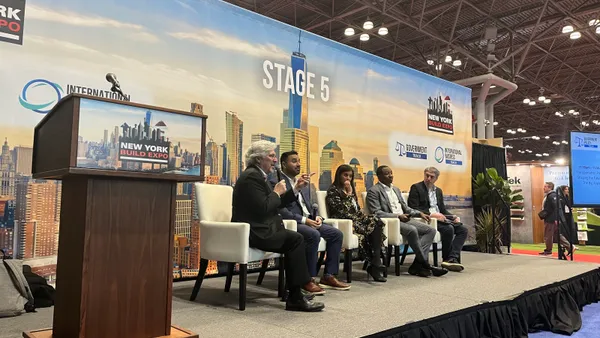Dive Brief:
- A group of U.S. senators from both sides of the aisle have introduced the Innovative Materials for America's Growth and Infrastructure Newly Expanded (IMAGINE) Act, which, if enacted, will support research and investment in new, state-of-the-art materials for use in U.S. transportation and water infrastructure projects. The bill's sponsors are Senators Sheldon Whitehouse (D-R.I.), Lamar Alexander (R-Tenn.), Mike Rounds (R-S.D.) and Cory Booker (D-N.J.).
- In assembling the list of materials covered by the measure, Whitehouse and the other authors took their cue from the Water Infrastructure Improvements for the Nation Act and included high performance asphalt mixtures and concrete formulations, geosynthetic materials, advanced alloys and metals, reinforced polymer composites, aggregate materials, advanced polymers and other material that will help accelerate construction timelines and be more resilient to flooding and water intrusion-related effects like corrosion.
- The bill provides for a task force that will study the federal infrastructure material approval process, so that it can develop new standards, and targets coastal and rural bridge and water infrastructure projects. The measure would also establish hubs throughout the U.S. dedicated to material research. The act would provide $8 million to the Turner-Fairbank Highway Research Center for its collaborative efforts to develop innovative materials for projects that include large span bridges, highway work and coastal resiliency; $65 million to the Federal Highway Administration for the design and use of cutting-edge materials in bridge projects and an additional $65 million to the Environmental Protection Agency for a new grant program that promotes the use of innovative materials in water-related infrastructure.
Dive Insight:
New materials have already made their way into infrastructure projects in some areas of the country, as research seeks to find components that will extend the life of roads and bridges.
University of Maine’s Advanced Structures and Composites Center has developed a composite girder bridge system that is reportedly easy to transport and install, plus offers double the collapse-resistance found in more traditional spans. Decks are installed onto lightweight composite girders and can be easily replaced at the end of the deck's useful life.
In Switzerland, scientists are working on a self-healing asphalt that uses an alternating magnetic field to repair surface cracks. In the Netherlands, Delft University of Technology researchers have developed an asphalt composite that is filled with electrically conductive fibers, resulting in a material that looks like closed-loop circuits.
And in Homosassa, Florida, the Florida Department of Transportation is using polymer and composite technologies in the construction of the $6 million, 186-foot-long Halls River Bridge. Spans are made of 36-foot-long hybrid composite beams, which are hollow plastic forms reinforced with glass and steel fibers and filled with self-consolidating concrete. In addition, instead of steel, the bridge will use glass- and concrete-fiber-reinforced polymers and carbon-fiber composite cable for piles, decks, railings and abutments.














